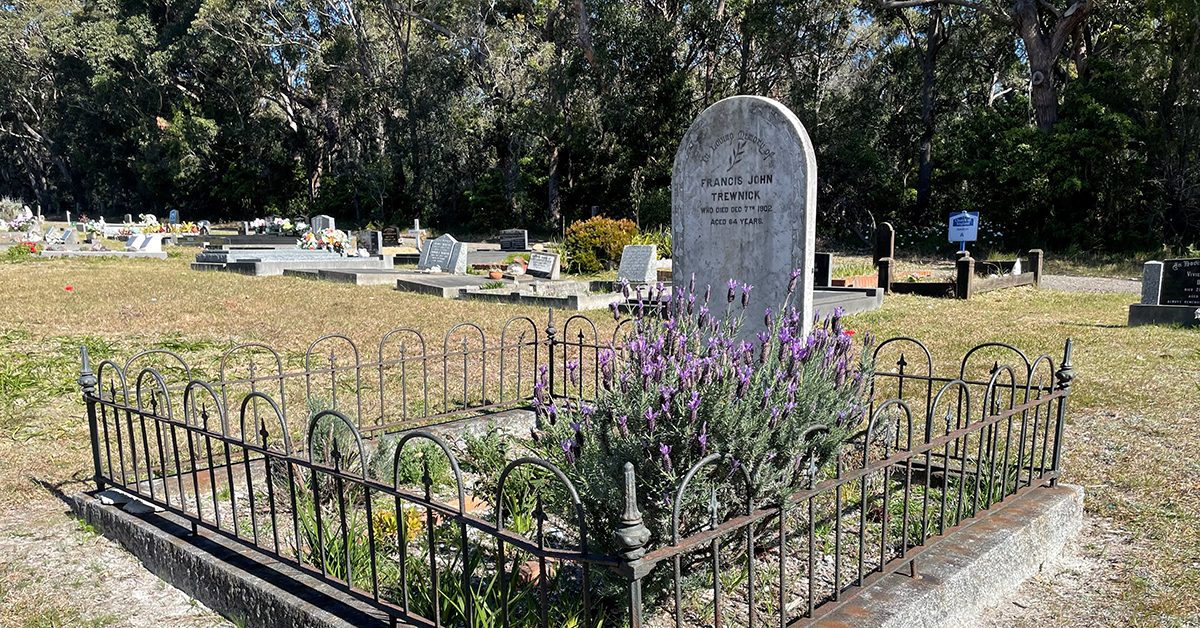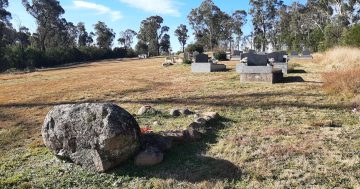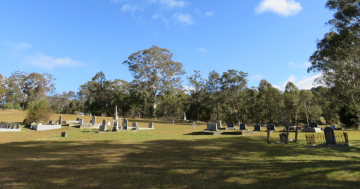
Learn about the endangered ecological communities living in our cemeteries. Photo: Bega Valley Shire Council.
Our cemeteries are home to decades of loved ones. But did you know they’re also the guardians of endangered ecological communities?
Their unique flora and fauna were waiting to be discovered as part of Bega Valley Shire’s “Life in our Cemeteries” events.
The next event will be held at the Bermagui Cemetery, which the council’s environmental engagement officer Erin Moon said would give the community a chance to document the plants, insects and animals that lived in and around the site.
“We had a great crowd at the Bemboka Cemetery [event] in March, who got to see a lot of insects, enjoyed a good plant search and even got to see a platypus in the Bemboka River,” she said.
“People may be surprised to discover many of our shire’s cemeteries contain endangered ecological communities and threatened species.”
Ms Moon said the Bermagui Cemetery was home to the Bangalay sand forest, a unique ecosystem that occurred in a fragmented, thin strip of land along the shire’s coastline.
The Bermagui Cemetery itself was home to numerous threatened owl and microbat species, as well as the yellow-bellied glider.
The Cemetery was partially surrounded by Crown managed land, meaning the vegetation surrounding the area remained intact and provided a refuge of sorts for threatened species.
“[Cemeteries] are protected against those threats of clearing, development and grazing pressure,” Ms Moon said.
“They are pockets of land that have been secured for a very long time and so, still contain original vegetation.”
As the event was developed in partnership with Atlas of Life, it contained a citizen scientist aspect that would help inform the council’s ongoing management of the environment.
“The benefit of citizen scientists is people power; you don’t have to find funding to collect this data,” Ms Moon said.
“As well, if you’ve got citizen scientists, they will endure changes in government, funding and priorities, so they’re vital.”
Atlas of Life chairperson Libby Hepburn said everyone who took part in the event would be able to document what they found on the iNaturalist app.
“Photographs are loaded onto the iNaturalist website so the identity of the plant, insect or animal can be confirmed,” she said.
“We hope we can bring to life another aspect of the Cemetery and demonstrate the important role plants, insects and animals play in the local ecosystem.”
Botanical expert Jackie Miles would lead a ‘walk and talk’ through the Cemetery and its surrounds, while local historian Fiona Firth would provide a history lesson of the site.
For those unable to make it to the event, Ms Moon promised more environmental community engagement programs were on the horizon.
“The ‘Love Our Lakes’ program is coming back, along with more Atlas of Life citizen science blitzes, and the ‘Wilderness to Water’ walking tours are going to be launched soon as well,” she said.
“It’s all so the community can get a deeper understanding of our natural environment and be immersed in nature.
“It’s also part of our ongoing recovery in part from the bushfires and what we’ve gone through as a community.”
The Bermagui Life in our Cemeteries event will be held on Saturday, 9 July at 11 am. Registration is required to attend.









